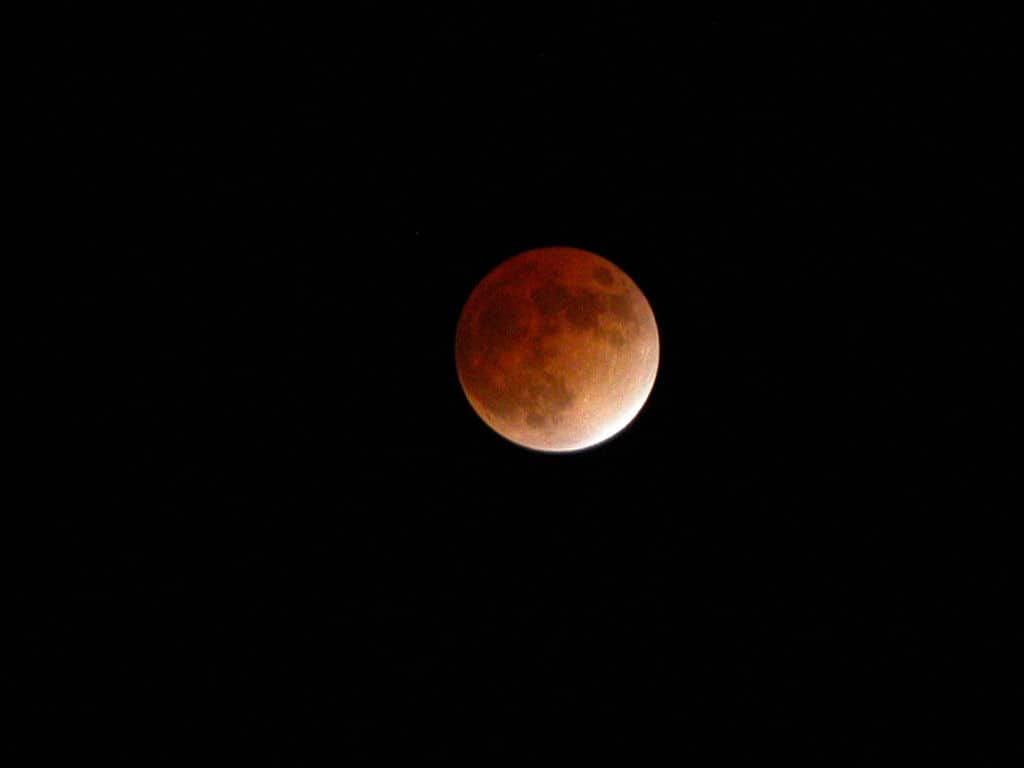
Hello DMV from the cruise ship Azamara Pursuit at sea in the Atlantic Ocean!
Sunday night, Jan. 20-21, the western hemisphere of the planet will be treated to what a lot of the media are calling a “super blood Moon.” I prefer to call it the full wolf supermoon total lunar eclipse. The last total lunar eclipse, also a supermoon event, in the D.C. area was Jan. 31, 2018, but it wasn’t that great of an event for the area. Not so this time around.
You can see the eclipse from literally anywhere — city, suburbia, countryside or seashore. It is best viewed away from bright lights, so the varying colors can be seen as well as the surrounding stars during totality. Binoculars are really your best bet for a gorgeous view, while a telescope will zero in on the movement of the Earth’s shadow over the lunar surface.
You can try to see the elusive penumbral shadow starting at 9:36 p.m. EST, but this is hard to see. The best part of this eclipse will take almost three and a half hours, from the beginning of the easy-to-see first partial phase at 10:34 p.m. to the end of the second partial phase at 1:51 a.m.
Totality, when the full wolf moon is completely covered by Earth’s shadow, will last 62 minutes, with its midpoint at 12:12 a.m. and ending at 12:43 a.m. You’ll have another chance to try to spot the penumbra from 1:52 a.m. until 2:48 a.m., when the eclipse ends.
If the weather cooperates, viewers will see the entire lunar eclipse well-placed in the sky, and experience those glorious 62 minutes of totality with the moon almost due south in the sky.
OK but that name …
OK, so why does this event have such a long name, with “super” and “blood” and “wolf” instead of just “total lunar eclipse”? Great question, and here’s the answer: This is the first of three “super full moons” in a row, while February’s will be the closest and largest full moon of the year.
“Blood Moon” is a popular phrase used to describe the reddish color the moon takes on during the totality phase of the eclipse. The color is caused by sunlight passing through the Earth’s atmosphere and falling on the surface of the moon. Because our planet is totally blocking out the light of the Sun, this reddish color — just like we can see at sunrise and sunset here on Earth — is the only light reaching the moon.
I prefer the name “full wolf supermoon total lunar eclipse” because it keeps intact the use of “full wolf moon” used to describe January’s full moon. Each month’s full moon has a name associated with it from folklore and past culture. January’s wolf moon denotes the howling of wolves in the dead of winter. There are other names that could be used as well, but each month has a favorite.
Photos and livestreams
If you want to photograph the eclipse, Nikon has provided some excellent tips.
To see the eclipse in case of bad weather, you can tune in to the Griffith Observatory livestream Sunday night starting at 8 p.m.
NASA’s Lunar Reconnaissance Orbiter will be without solar power during totality, but should be OK while on batteries. The orbiting spacecraft has to protect against the intense cold too.
The Chinese Chang’e 4 rover and lander are already in deep cold and darkness as they are on the far side of the moon, where the sun is absent.
Be sure to enjoy an added celestial bonus, as brilliant Venus and Jupiter are currently gracing the morning sky at 5 a.m. in the southeast. They will be closest on the morning of Jan. 22, so be sure to take a peek.
I will be at sea off the west coast of South America and will witness the entire eclipse if the skies are clear. I will tweet any pics I get to @wtop.
Follow my daily blog to keep up with the latest news in astronomy and space exploration. You can email me at skyguyinva@gmail.com.
Like WTOP on Facebook and follow @WTOP on Twitter to engage in conversation about this article and others.
© 2019 WTOP. All Rights Reserved. This website is not intended for users located within the European Economic Area.
https://wtop.com/the-space-place/2019/01/coming-sunday-night-not-just-any-total-lunar-eclipse/Bagikan Berita Ini
















0 Response to "Coming Sunday night: Not just any total lunar eclipse - WTOP"
Post a Comment